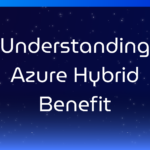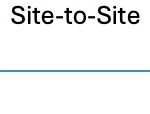
Understanding Azure Hybrid Benefit
July 8, 2025
Azure Point-to-Site VPN Setup with Basic VPN Gateway | Full Deployment Guide
July 8, 2025As organizations continue to scale their security operations, managing the volume and cost of data ingestion becomes increasingly critical. Microsoft Sentinel’s new Summary Rules Templates offer a structured and efficient approach to aggregating verbose data – enabling security teams to extract meaningful insights while optimizing resource usage.
What Are Summary Rules?
Summary rules are designed to aggregate high-volume, verbose logs into concise, structured outputs. These outputs are routed to analytics logs, where they can be leveraged for detection, investigation, and reporting. By summarizing data based on attributes such as time intervals, IP addresses, or user identities, summary rules help reduce data noise, accelerate analysis, and support cost-effective data tiering strategies.
Addressing Common Challenges
Many customers face similar challenges when working with verbose data:
- Uncertainty around best practices: Identifying which data to summarize and how to structure it effectively can be complex.
- Limited technical expertise: Not all users are proficient in Kusto Query Language (KQL) or familiar with the nuances of their data schemas.
- Concerns about configuration quality: Without confidence in the setup, teams may hesitate to implement summary rules, fearing inefficiencies or missed insights.
- Need for ready-to-use content: Customers increasingly expect pre-built, scenario-driven templates that can be deployed with minimal customization.
The Role of Summary Rules Templates
To address these needs, Microsoft Sentinel introduces Summary Rules Templates as a new content type within the Content Hub. These templates are designed to simplify the deployment of summary rules by providing:
- Pre-defined queries tailored to common data types and use cases.
- Metadata such as frequency, source and destination tables, and solution origin.
- A consistent and intuitive user experience for installation and management.
Templates can be installed directly from the Content Hub and managed via the Summary Rules page, where users can review, customize, and deploy them as needed.
How to Get Started
1. Access the Content Hub
Navigate to the Content Hub in Microsoft Sentinel and filter by the new “Summary Rules” content type.
2. Install a Template
Select a template to view its details, including query logic, frequency, and destination table. Click Install Solution to add it to your workspace.
3. Manage Templates
Go to the Summary Rules page and open the Templates tab to view all installed templates.
4. Create a Rule
Choose a template and click Create. You can deploy it as-is or adjust the configuration to meet your specific requirements.
Summary Rules Templates in Microsoft Sentinel offer a scalable and efficient approach to aggregating verbose data, enabling security teams to focus on high-value insights while managing costs effectively. By simplifying rule creation and providing ready-to-use templates, they lower the barrier to adoption and promote consistent, best-practice implementations. As organizations continue to evolve their data strategies, these templates serve as a foundational tool for operational efficiency and analytical depth.
Explore the available templates in the Content Hub and start optimizing your data collection workflows today.
